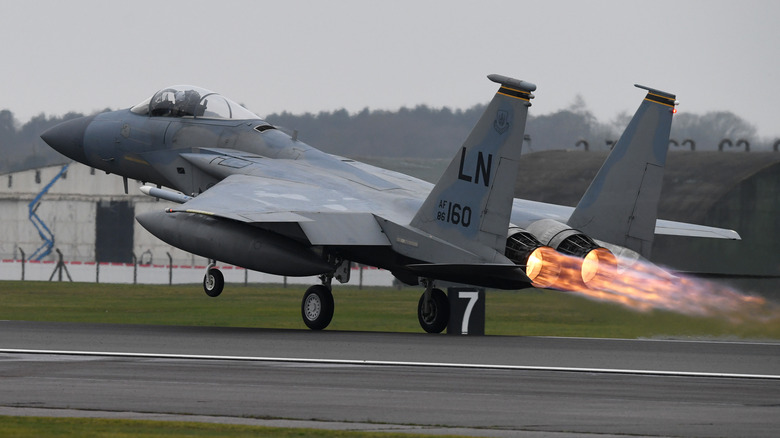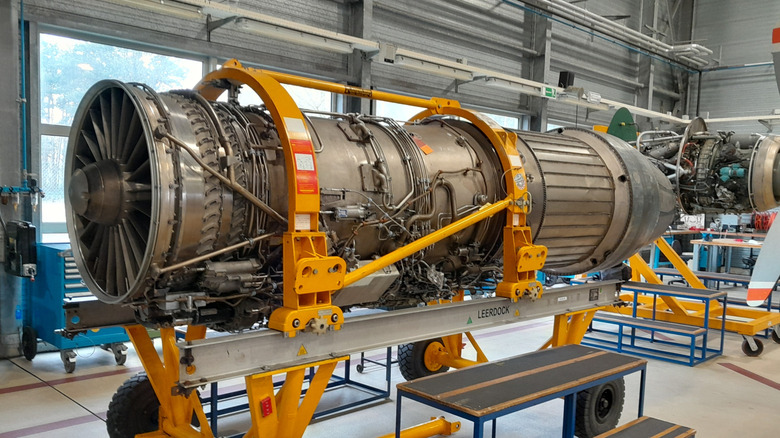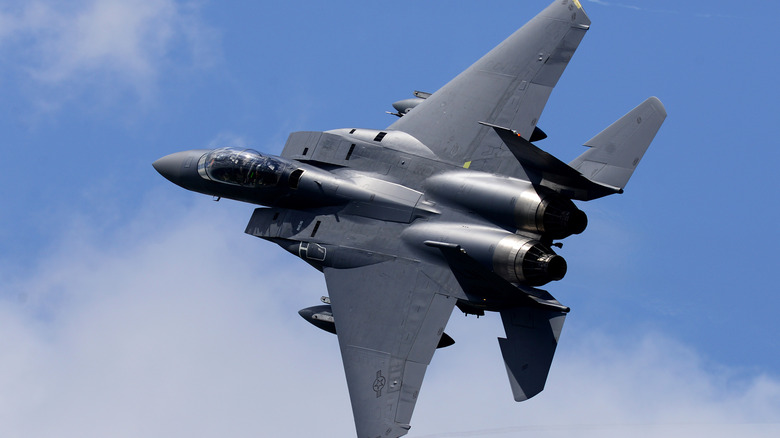What Engines Do F-15 Jet Fighters Use & How Powerful Are They?
The F-15 Eagle is a fourth-generation fighter that still has a relevant part to play in military strategies. This is even although fifth-generation fighters like the F-35 Lightning II and F-22 Raptor hogging much of the limelight. Despite being an old-timer (the first F-15A flight was in 1972), the current F-15EX version is still being produced at Boeing's facility in St. Louis, Missouri. It says much about the original design of the plane that over fifty years since it first took to the air, it's still very much a part of the USAF's strategy.
Among fighter jets, the legendary F-15's combat record is second to none. In over fifty years of service, it remains a fighter jet that has never been shot down in air-to-air combat and has dispatched a formidable 104 enemy aircraft. Originally built by McDonnell Douglas, the program is now run by Boeing. But these aren't the only companies involved with the F-15. Pratt & Whitney was the company that supplied the engines for all the earlier variants of the plane. Two Pratt & Whitney F100-PW-100 turbofan engines with afterburners were used to power the initial variants, each engine produced 23,450 pounds of thrust.
For later variants, the planes were fitted with F100-PW-220 or 229 engines, which could produce 25,000 to 29,000 pounds of thrust each. The F-15EX version is the first variant not to use the F100 family of engines. Instead, Boeing opted to furnish the jet with two General Electric F110-GE-129 engines, each of which can produce 29,000 pounds of thrust.
Pratt & Whitney F100 - The F-15's original powerhouse
The Pratt & Whitney F100 family of engines has powered both the F-15 and its slightly younger sibling, the F-16 Fighting Falcon. Over its long and storied history, the engine has amassed over 30 million flight hours across 23 air forces. However, just putting in lots of hours doesn't necessarily mean that it's a good engine — it needs performance too. The F-15 proved the F100 capable. A fighter jet doesn't go fifty years without a single air-to-air combat loss if it's powered by a dud of an engine. A large part of its crucial acceleration and maneuverability characteristics can be traced to the engine's high thrust-to-weight ratio.
The twin F100 engines also allowed the F-15 to reach a top speed of 1,875 mph — or Mach 2.44. For comparison, the single-engined F-35 Lightning II can only achieve about 1,200 mph (Mach 1.6). While this doesn't make the F-35 a slouch, it could be considered rather pedestrian when compared to the much older aircraft. Although there are good reasons why modern jet fighters have slower top speeds. However, despite there being over 3,800 F100 engines being used by air forces across the globe, the marriage between the F-15 and the F100 engine may finally be at an end. Although the F100-PW-229 is fully capable of powering the new FE-15EX, it will use the GE F110-GE-129 instead.
F-15EX - Still flying after all these years
Part of the F-15's longevity can be traced to the insufficient number of F-22 fighters produced. Ultimately, the F-22 proved to be too expensive, and only 195 of the aircraft were produced. This left something of a hole in the USAF armory that meant the F-15C and F-15D fighters were kept in service beyond their intended service life. Enter the F-15EX. From the outside, the F-15EX is still very much a child of the seventies. However, dig a little deeper and the changes soon become apparent. The F-15EX is the first to feature digital fly-by-wire controls and a glass cockpit with touchscreen controls. And, of course, it's also the first F15 to fly without being powered by the Pratt & Whitney F100 family of engines.
The F-15 now joins the list of jet fighters powered by General Electric engines. The decision to move to GE engines was taken despite Pratt & Whitney campaigning to maintain its involvement in the program. However, the decision remained to use the GE engines. The F110 family of engines is also an engine with a proven pedigree. As well as the F-15EX, it also powers 70% of frontline F-16 fighters. The engine comes in two variants, the 129 and 132. The former is used in the new F-15 and can produce 29,000 pounds of thrust; the latter is currently installed in F-16 jets and can produce 32,500 pounds of thrust.


